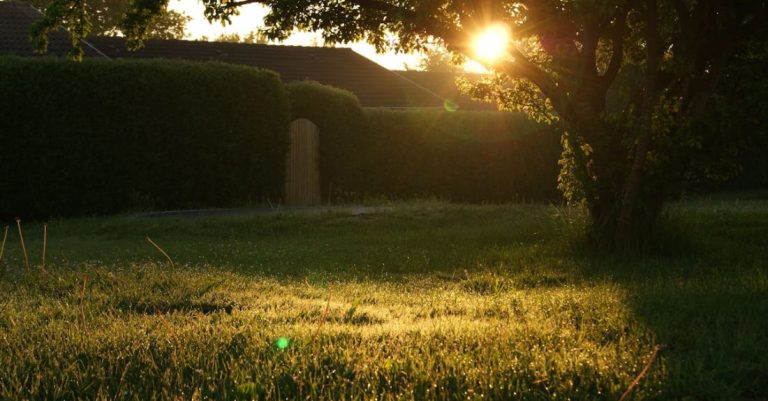
Natural habitats are critical for maintaining biodiversity and supporting ecosystems that sustain life on our planet. However, human activities such as deforestation, urbanization, and pollution continue to threaten these vital habitats. Preserving natural habitats is crucial to ensure the well-being of both wildlife and humans. In this article, we will explore the best ways to protect and conserve natural habitats for future generations.
Conservation through Protected Areas
One of the most effective ways to preserve natural habitats is through the establishment of protected areas. National parks, wildlife reserves, and marine sanctuaries provide a safe haven for a wide range of species and help to maintain the ecological balance of the environment. These protected areas offer refuge for wildlife, safeguard important habitats, and promote sustainable land use practices. By designating and effectively managing protected areas, we can ensure the long-term conservation of natural habitats.
Habitat Restoration and Rehabilitation
In addition to protecting existing habitats, it is essential to focus on restoring and rehabilitating degraded ecosystems. Habitat restoration involves activities such as reforestation, wetland restoration, and invasive species removal, aimed at improving the health and resilience of ecosystems. By restoring degraded habitats, we can enhance biodiversity, increase ecosystem services, and mitigate the impacts of climate change. Habitat rehabilitation efforts play a crucial role in reversing habitat loss and ensuring the survival of endangered species.
Sustainable Land Use Practices
Adopting sustainable land use practices is key to preserving natural habitats while meeting the needs of human populations. Sustainable agriculture, forestry, and fisheries practices can help minimize habitat destruction, soil erosion, and water pollution. By promoting sustainable land management techniques, we can protect valuable habitats, conserve biodiversity, and support local communities. Implementing sustainable practices ensures that natural habitats remain intact and continue to provide essential ecosystem services.
Community Engagement and Education
Engaging local communities in conservation efforts is essential for the successful preservation of natural habitats. Community-based conservation initiatives empower local residents to take an active role in protecting their environment and natural resources. By raising awareness, providing education, and involving communities in decision-making processes, we can foster a sense of stewardship and ensure the long-term sustainability of natural habitats. Community engagement is vital for building support for conservation efforts and promoting a harmonious relationship between people and nature.
Collaboration and Partnerships
Effective habitat conservation requires collaboration and partnerships among governments, non-profit organizations, businesses, and local communities. By working together, stakeholders can pool resources, share expertise, and implement integrated conservation strategies. Collaborative efforts can lead to more efficient use of funds, better coordination of activities, and greater impact on conservation outcomes. Building partnerships and fostering cooperation among diverse stakeholders are essential for achieving lasting conservation success.
Adapting to Climate Change
Climate change poses a significant threat to natural habitats worldwide, leading to disruptions in ecosystems and loss of biodiversity. Adapting to climate change involves implementing strategies to help habitats and species cope with changing environmental conditions. This may include creating climate-resilient habitats, establishing wildlife corridors, and protecting natural areas that serve as carbon sinks. By incorporating climate change adaptation measures into conservation planning, we can enhance the resilience of natural habitats and ensure their long-term survival.
Innovative Technologies for Conservation
Advancements in technology offer new opportunities for conserving natural habitats and monitoring biodiversity. Remote sensing, geographic information systems (GIS), and conservation drones can provide valuable data for habitat mapping, monitoring, and enforcement. Genetic technologies such as DNA analysis and biobanking can help in species identification and conservation genetics. Embracing innovative technologies can enhance the effectiveness of conservation efforts and improve our understanding of natural ecosystems.
Promoting Sustainable Tourism
Sustainable tourism can play a significant role in supporting habitat conservation and local communities. Eco-tourism initiatives that promote responsible travel practices can generate income for conservation efforts, create employment opportunities, and raise awareness about the importance of preserving natural habitats. By promoting sustainable tourism practices, we can harness the economic benefits of tourism while safeguarding the integrity of natural ecosystems. Sustainable tourism can be a powerful tool for promoting conservation and fostering a deeper appreciation for the natural world.
In conclusion, preserving natural habitats is essential for maintaining biodiversity, ecosystem services, and the well-being of all living organisms. By focusing on protected areas, habitat restoration, sustainable land use practices, community engagement, collaboration, climate change adaptation, innovative technologies, and sustainable tourism, we can work together to ensure the long-term conservation of natural habitats. It is our collective responsibility to protect and preserve these critical habitats for future generations and for the health of our planet. Together, we can make a positive impact on the conservation of natural habitats and create a more sustainable future for all.





